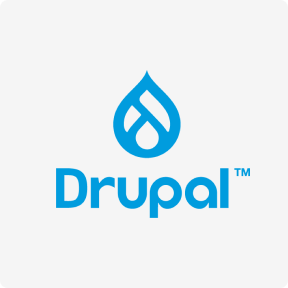It allows each team member to own a new code change through to release. CI enables scaling by removing any organizational dependencies between development of individual features. Developers can now work on features in an isolated silo and have assurances that their code will seamlessly integrate with the rest of the codebase, which is a core DevOps process. And don’t forget that regardless of the CI tool you go with, you can still make the most of Bitbar’s native integration support with continuous integration tools and a robust REST API. Adopting a continuous integration approach is one of the best things your team can do in terms of improved efficiency.

While many mobile app developers are struggling to set up and maintain their CI workflow, you won’t have to worry about any of that using Nevercode’s direct approach. AppVeyor is a Windows-only cloud-based service for testing, building, and deploying Windows applications. Windows devs use AppVeyor’s comfortable technology to conclude their tests and deploy applications in the cloud or in a continuous integration solutions physical server environment. With pre-installed software like Visual Studio and your favorite SDKs, you can quickly get up and running with a solid CI environment. Semaphore CI provides cloud-based continuous integration and deployment built for speed and simplicity. With Semaphore your team can stay on top of the latest bugs and errors, way before they reach the attention of your users.
XL Deploy
After all, in the 1970s, C was the vessel in which UNIX was re-designed. But despite the goal-oriented origins of the C language, various elements of its development make it a fitting language to use for an array of needs. Low-level access to memory, the use of simple keywords, and a clean syntax makes C easy to use for such a task. In recursive programming, functions have the ability to call on themselves, whether directly or indirectly. The utility of this feature is to break up a problem into smaller problems.
Whether you want to run three builds alongside each other or import source code from two separate version control systems (VCSs), TeamCity can do it all. Jenkins is one of the most popular open-source tools on the market for automating your projects. Deployed on a standalone continuous integration server, Jenkins can bolster scalability for your business by automating testing and finding defects quickly. Continuous integration tools can complement a robust ecosystem of software tools that help meet your business needs.
Connecting to GitHub projects for CI
It triggers automated workflow by simplifying pushing to the repository. With many Continuous Integration tools available in the market, it is quite a tedious task to select the best tool for your project. Following is a list of top 20 CI tools with popular features and download links. Configure and run software builds easier with the IBM UrbanCode Build tool, an enterprise-scale build-management solution that uses a template-driven system. Vexor.io is a cloud continuous integration service offering unlimited parallelism with pay-per-minute, as-you-go pricing. If the target code base for a CI install does not have a VCS, step one is installing a VCS.
Azure Pipelines is a cloud-based CI/CD tool that is a component of Microsoft’s Azure DevOps portfolio. It provides an infrastructure that is incredibly versatile and scalable for creating, testing, and deploying applications. Azure Pipelines is compatible with multiple development stacks because it supports multi-platform and multi-language environments. For organisations with existing Microsoft ecosystem investments, its interoperability with other Azure services makes it a desirable option.
Trunk-based development
There are many continuous integration tools on the market to supplement your software development process. By utilizing continuous integration as a strategy, you save your business time and money. CI/CD Tools are the software applications that help users efficiently integrate the code and develop the software build.
- In the context of continuous integration, agile software development is about delivering software iterations based on how you prioritize the value of the features as you continuously integrate.
- This tool was made for working with projects that use code from the Bitbucket and GitHub repositories.
- The one-on-one meeting should be focused on the team member’s goals, challenges, and development.
- With its easy setup and configuration using YAML files, developers can quickly enable CI for their projects.
- These benefits enable the rest of the organization to better plan and execute go to market strategies.
By asking the right questions during one-on-one meetings, you can encourage your team to share thoughts and ideas and support development and career growth. To create consistent and open communication, establish a regular cadence (weekly or bi-weekly) for one-on-one meetings with each team member. For instance, if a team member is struggling with a particular issue or project, you may decide to increase the frequency of your one-on-one meetings to provide additional support and guidance. After making sure the developers align to the skillset the role requires, you will need to check their technical abilities to ensure it meets the project’s expectations. Knowing exactly what’s the technical level that the candidates should have can help you design the type of technical validation that best adapts to your needs.
Buildout
CodePipeline supports flexible pipeline stages and actions, enabling developers to customize their CI/CD workflows. As a managed service, CodePipeline handles the underlying infrastructure, scaling, https://www.globalcloudteam.com/ and monitoring, reducing operational overhead. Real-time monitoring and notifications inform developers about pipeline events, ensuring efficient and reliable software delivery on AWS.
A development workflow that follows the CI model is known as a CI pipeline. However, this labor-saving strategy encounters friction when changes conflict, requiring additional steps to integrate code. This costs time and is a common source of frustration for developers who often refer to this roadblock as “merge hell.” At this stage, code updates are deployed to the production environment without any manual interventions.
Feature availability and product trials
The DevOps model was created to improve collaboration between development and operations teams to produce better software for the customer. To create applications at scale, engineers divide tasks between multiple team members so they can collectively code the full feature. A continuous integration pipeline automates stages of a project’s pipeline—such as builds, tests and deployments—in a repeatable way, with minimal human intervention. An automated continuous integration pipeline is essential to streamline the development, testing and deployment of your applications by enabling controls, checkpoints and speed. Agile is a software development practice that improves how software development teams organize themselves, adapt to changes in requirements and release software.

CI gives a level of transparency to the rest of the organization on how engineering execution is progressing. This transparency and communication utility integrates gracefully with an agile project development workflow. Developers can rapidly push changes and experiment with new feature ideas to help improve the user experience.
Automation with Jenkins & EC2
Discuss opportunities for growth and development within the team or organization. Recognizing and rewarding team members for their hard work and achievements can boost morale and motivation. Regularly acknowledging successes, offering praise, and discussing rewards creates an environment in which everyone feels trust, safety, accountability, and equity. Carving out time on a regular basis (i.e. monthly) to review team objectives, discuss progress, and identify areas for improvement is key to making sure your team is working toward the same goals. Giving your team a safe environment to discuss concerns or issues allows managers to identify and resolve hiccups before they escalate and become bigger problems. Creating a supportive space for discussion can foster a team culture of open communication and feedback.
